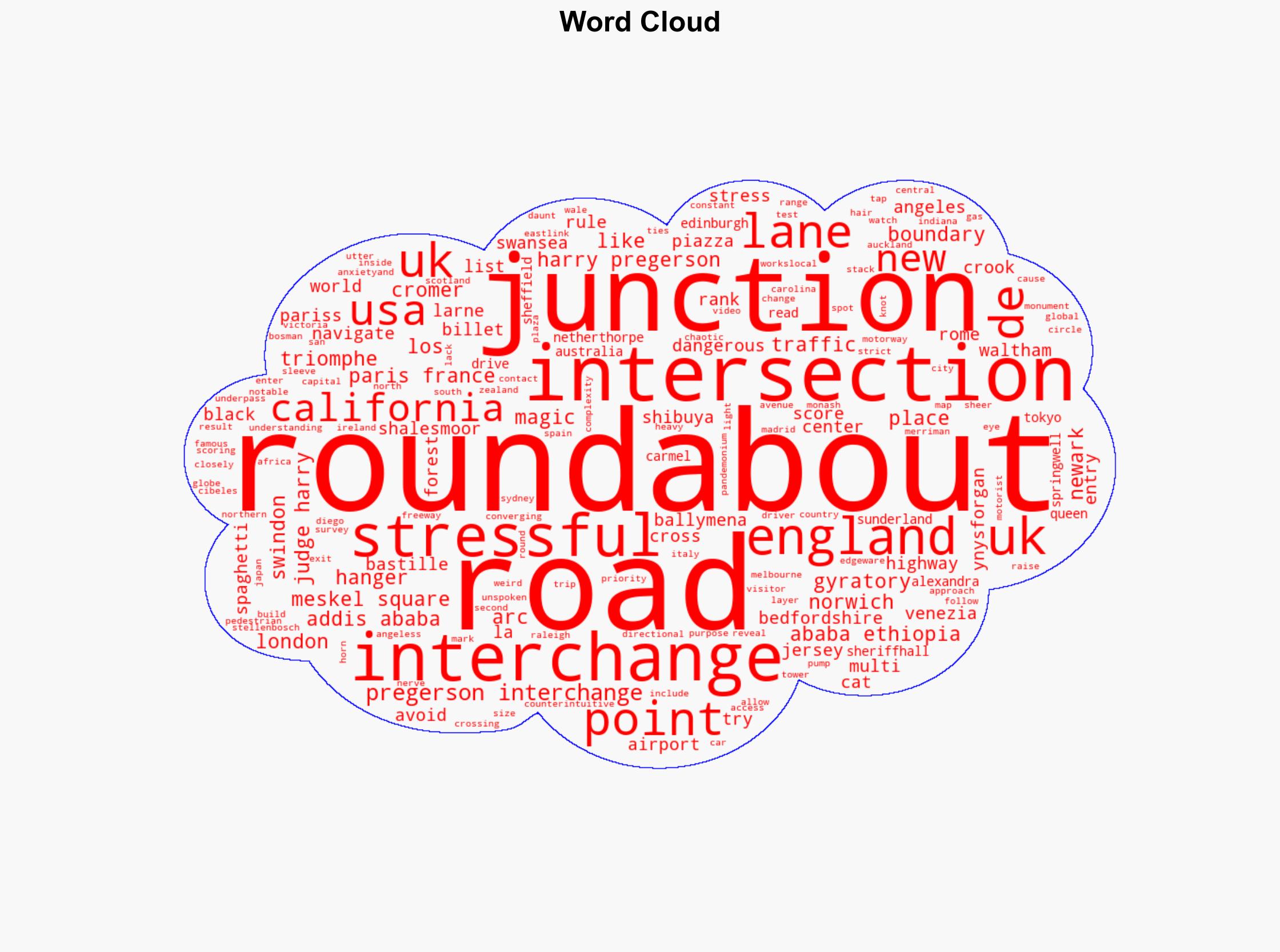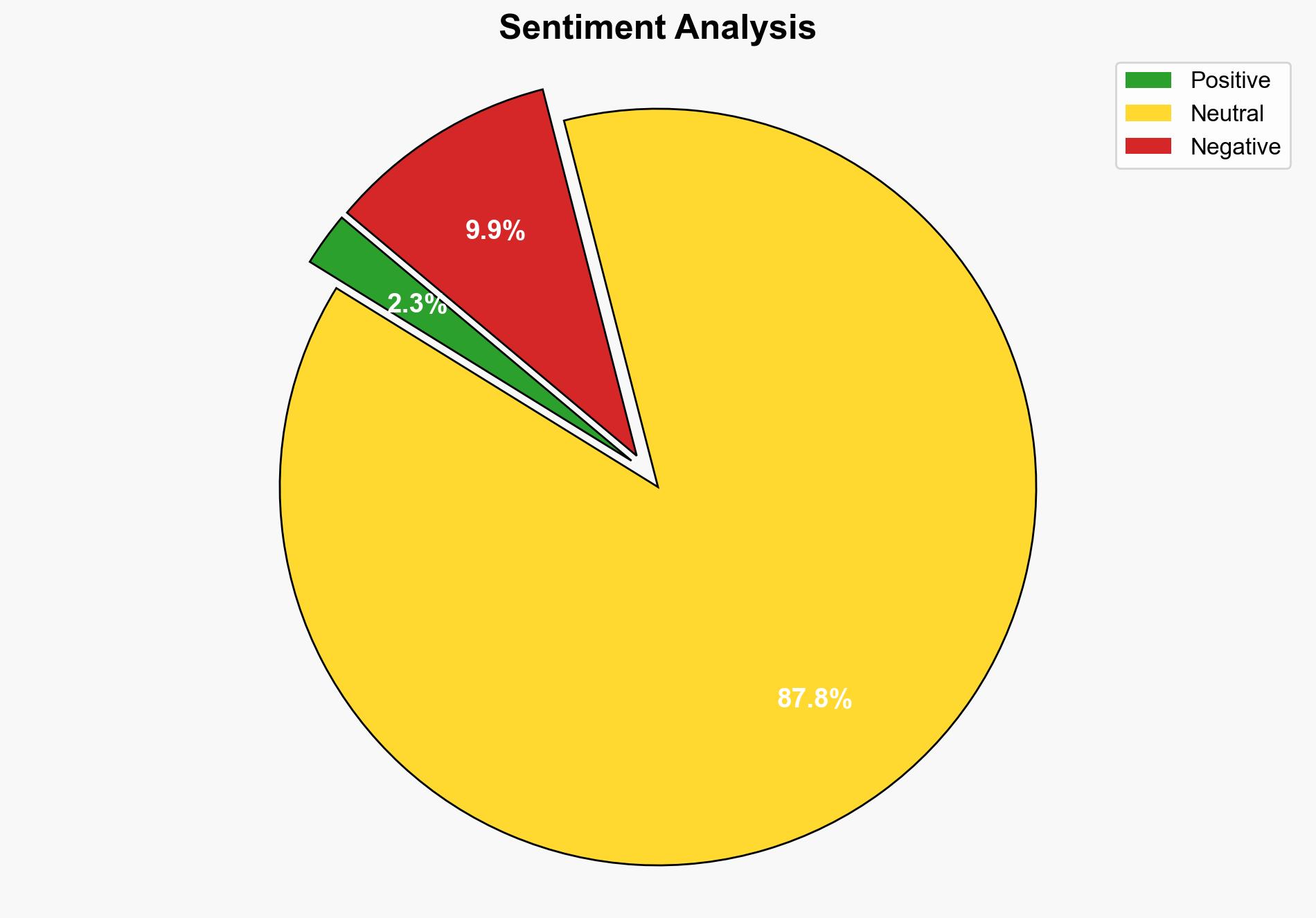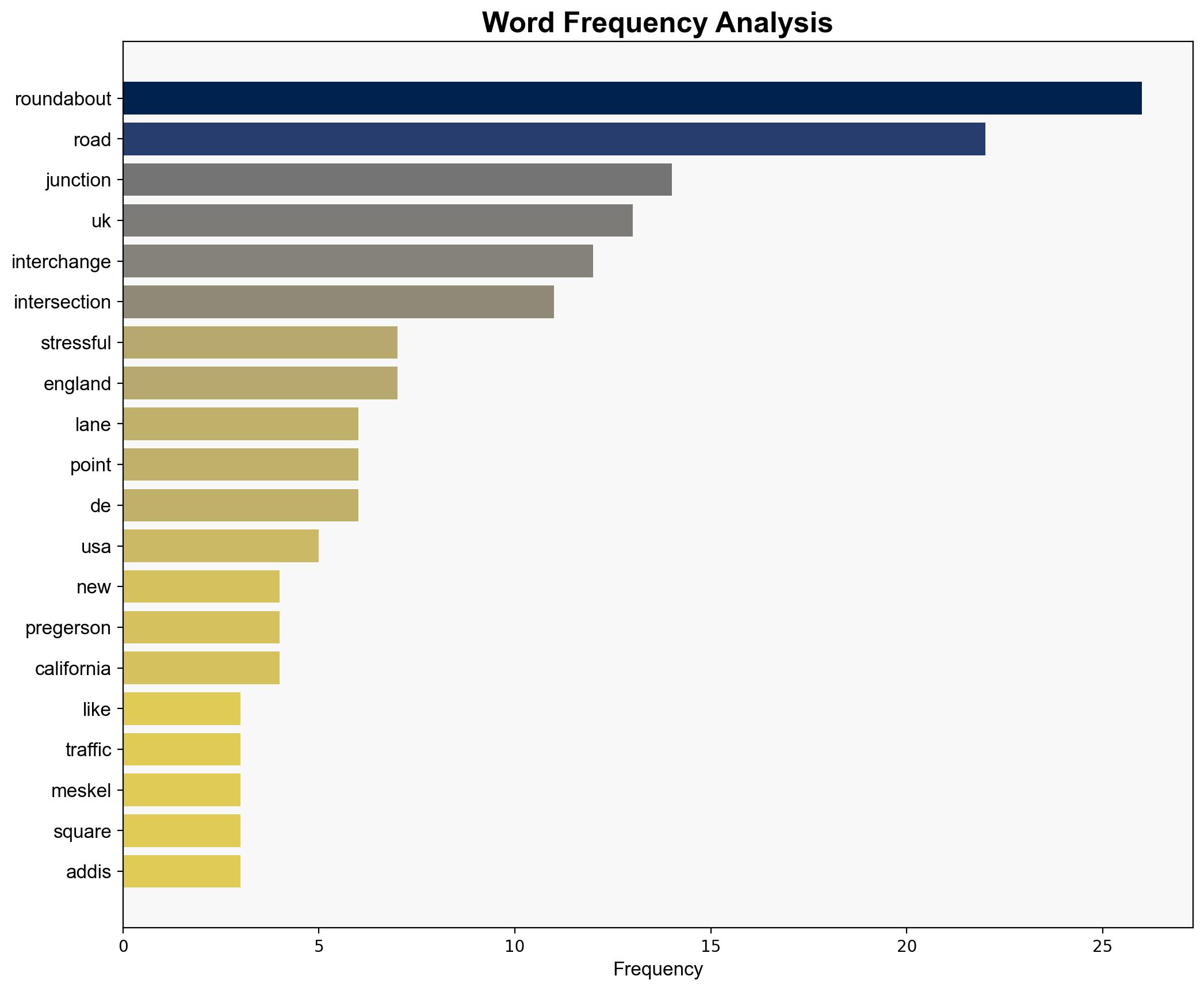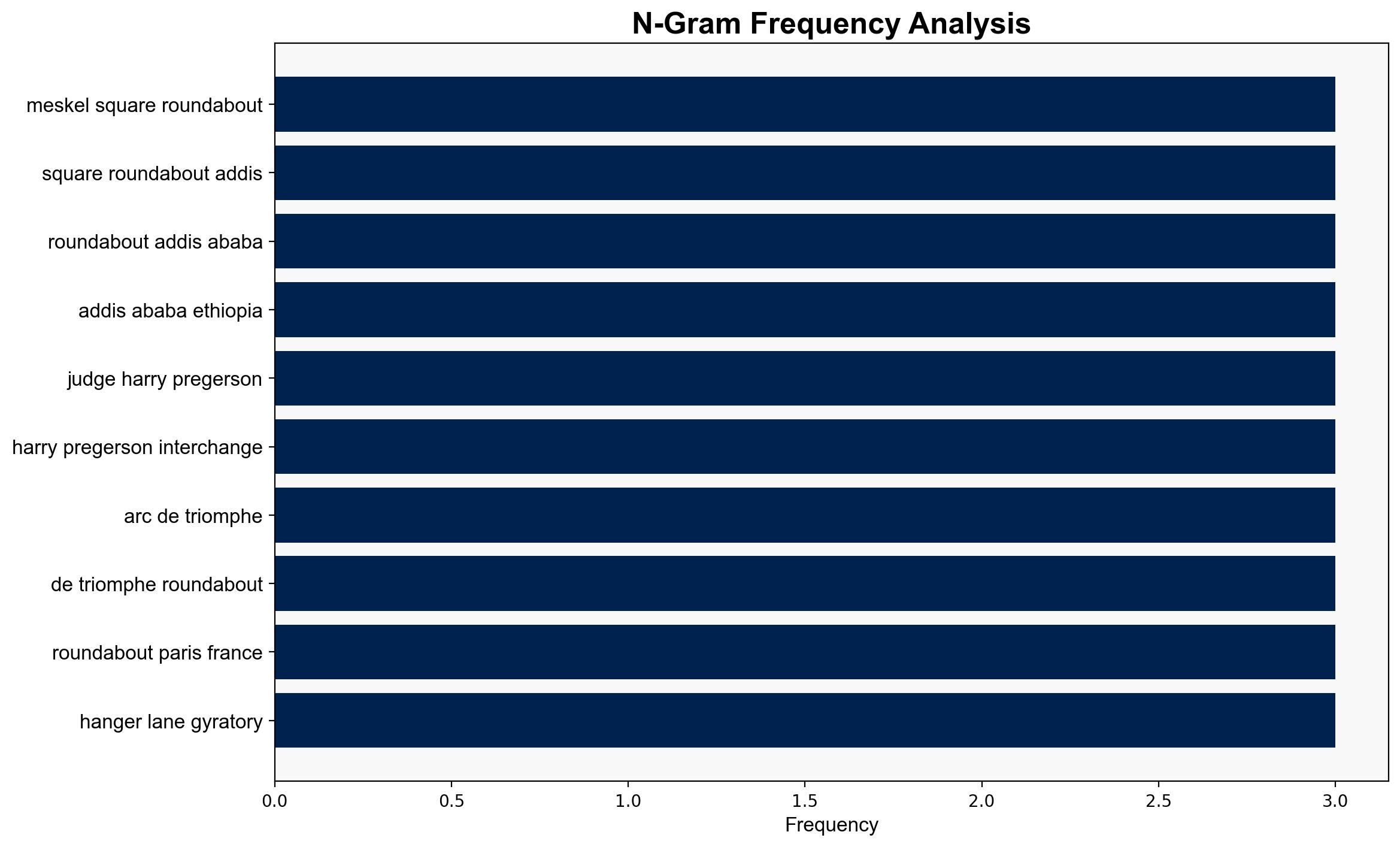The Worlds 25 Most Stressful Intersections – Mental Floss
Published on: 2025-08-25
Intelligence Report: The Worlds 25 Most Stressful Intersections – Mental Floss
1. BLUF (Bottom Line Up Front)
The analysis suggests that the most supported hypothesis is that stressful intersections are primarily a result of inadequate infrastructure design and lack of clear traffic management systems. Confidence in this hypothesis is moderate due to the variability in local traffic norms and behaviors. Recommended action includes advocating for improved traffic management systems and infrastructure redesign to enhance safety and reduce stress at these intersections.
2. Competing Hypotheses
1. **Hypothesis A**: Stressful intersections are primarily caused by poor infrastructure design and lack of clear traffic management systems, leading to confusion and anxiety among drivers.
2. **Hypothesis B**: The stress experienced at these intersections is largely due to cultural and behavioral factors, where local driving customs and lack of adherence to traffic rules exacerbate the complexity of navigating these junctions.
Using the Analysis of Competing Hypotheses (ACH) 2.0, Hypothesis A is better supported. The consistent mention of inadequate road markings, absence of traffic lights, and complex interchange designs across various locations suggests a systemic issue in infrastructure rather than purely cultural factors.
3. Key Assumptions and Red Flags
– **Assumptions**: It is assumed that infrastructure improvements can significantly reduce stress levels. This may overlook the adaptability of local drivers to existing conditions.
– **Red Flags**: The reliance on subjective survey data from motorists may introduce bias. The absence of quantitative data on accident rates or traffic flow efficiency is a notable gap.
– **Blind Spots**: The analysis does not account for technological advancements in traffic management that could mitigate stress without physical infrastructure changes.
4. Implications and Strategic Risks
– **Patterns**: Repeated stress at intersections could lead to increased accident rates, impacting public safety and economic productivity.
– **Cascading Threats**: Poorly managed intersections might become targets for cyber-attacks on traffic systems, leading to broader urban disruptions.
– **Geopolitical and Psychological Dimensions**: Stressful intersections in major cities could affect tourism and international perceptions of urban safety and efficiency.
5. Recommendations and Outlook
- Conduct detailed traffic studies to quantify the impact of current intersection designs on safety and efficiency.
- Implement pilot programs for advanced traffic management technologies, such as adaptive traffic lights and real-time navigation aids.
- Best-case scenario: Successful redesign and management reduce accidents and stress, improving urban mobility.
- Worst-case scenario: Failure to address issues leads to increased accidents and potential exploitation by malicious actors.
- Most likely scenario: Gradual improvements through targeted interventions and technology adoption.
6. Key Individuals and Entities
No specific individuals are mentioned in the source text. Entities involved would include local and national transportation authorities responsible for infrastructure and traffic management.
7. Thematic Tags
urban planning, infrastructure development, traffic management, public safety




